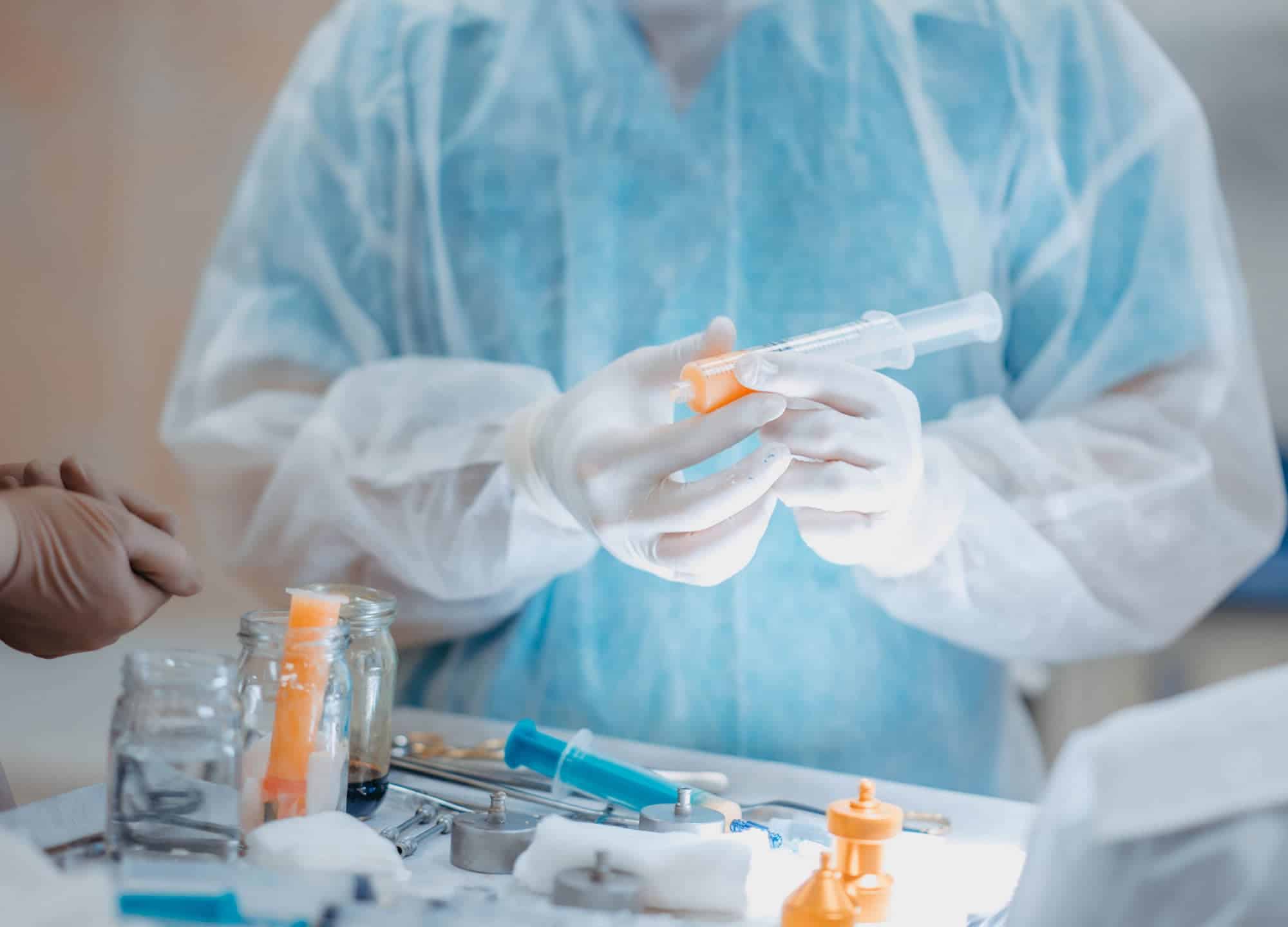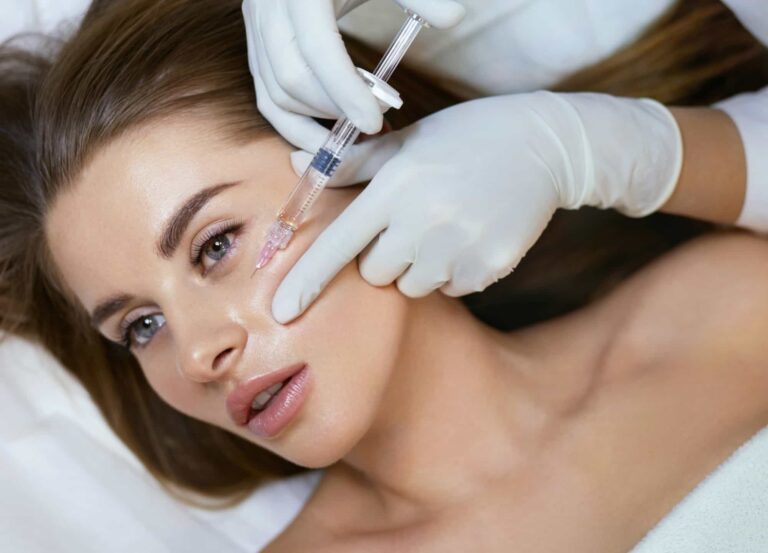Like an undeclared college freshman, our body’s stem cells are brimming with potential—to grow and renew and transform—but they are still, by definition, unspecialized. Over time, they develop, divide, and eventually differentiate (choosing that metaphorical major), with their surroundings generally influencing what they ultimately become.
Beyond replenishing various cells throughout the body, stem cells are healers. “When there’s damage occurring in the body, these cells migrate to that location and start replicating and messaging other cells in the environment in order to trigger, manipulate, and otherwise lead the healing process,” explains Dr. Tunk Tiryaki, a specialist registered plastic surgeon in London.
While there are different categories and kinds of stem cells, plastic surgeons are fond of the fat-derived variety. “There are twice as many stem cells in fat as there are fat cells themselves,” says Dr. Michael Roskies, a board-certified facial plastic surgeon in Toronto. Not only are fat-sourced stem cells relatively easy to harvest via liposuction, but they’re transferred along with their fatty environs, to deliver multiple benefits. Considered an endocrine organ, fat contains various cells and produces myriad chemicals and hormones, which enable fat to do much more than impart plumpness and boost curves. “Studies and anecdotes show that the long-term effects of fat are skin thickening, fine-line softening, and pigmentation improvement, among other things,” Dr. Roskies says.
How are fat-derived stem cells being used in plastic surgery?
Says Dr. Ashley Gordon, a board-certified plastic surgeon in Austin, Texas, “It’s really interesting how we used to use fat solely for volume—but now probably half of what we use it for is regeneration with stem cells and not volume at all.”
Size matters: microfat versus nanofat
After removing fat from diet- and exercise-resistant areas, like the lower abdomen, flanks, and outer thighs, surgeons process it to purify and isolate the fat cells from bodily fluids, anesthesia, and the like. They’re left with what they call microfat, explains Dr. Gordon—“intact fat cells that are going to translate into increased volume when we transplant it into areas like the midface and temples,” which tend to deflate with age.
Microfat can be broken down further, into nanofat—a paste made up of ruptured fat cells, their supporting stem cells, and other beneficial fat-based compounds—which rather than adding fullness and shape to the skin, improves its tone, texture, and overall health.
“For more than two decades now, we’ve known clinically that fat does improve the skin, but I don’t think it’s due to just one thing,” says Dr. Haideh Hirmand, a board-certified plastic surgeon in New York City. In nanofat, “there’s more than just stem cells,” she goes on to explain. Moreover, “we know that the stem cells themselves contain or produce and secrete biologically active substances,” which control inflammation, turn on collagen-producing fibroblasts, and prevent DNA damage. “But we still don’t know exactly which components do what,” Dr. Hirmand says.
As Dr. Tiryaki notes, different sizes of fat—microfat and nanofat—serve to combat the different tissue changes that occur with time. “Much of facial aging is due to deep volume loss,” he says, which surgeons aim to address by injecting fat on top of bone and into soft tissue, to boost structural support and thicken things up. Improving skin quality, on the other hand, is a more superficial pursuit, he adds. And since the fat is placed closer to the skin’s surface, smaller bits are needed, to avoid lumps and bumps.
In most cases, doctors are using a combination of microfat and nanofat, commonly in conjunction with surgery, to augment those results.
The “stem cell facelift”
While there is no standard definition for a so-called stem cell facelift, the term is typically used as a euphemism for classic facial fat grafting.
Plastic surgeons frequently perform fat grafting during facelift surgery. “I use microfat for volumization in 90% of my facelift cases, because the descent of the muscle is only half the story,” says Dr. Roskies. “By treating deflation of the facial fat pockets at the same time, we take a more holistic approach to reversing the signs of aging.” Oftentimes, he says, after tackling hollows and restoring contours with microfat, he’ll go after etched-in wrinkles around the mouth and eyes with nanofat. Nanofat may also be injected into select areas or microneedled or stamped across the face and neck, to address widespread sun damage.
Facial fat grafting can be done as a stand-alone procedure as well—entirely separate from a facelift—yet this treatment too is sometimes marketed as a “stem cell facelift,” to perhaps tease a surgical outcome. There are doctors who worry, however, that adding fat to the face without elevating and repositioning fallen tissues could contribute to sagging down the road.
Despite abundant anecdotal reports of the rejuvenating powers of stem cell facelifts, some argue that the claims are outpacing the data. A 2021 review of the literature on the anti-aging efficacy of nanofat concluded that “though considered to be a safe procedure, and despite documented histologic improvement and striking clinical outcome in some reports, available evidence can hardly support clinical improvement of skin quality.” It’s worth noting that even studies reporting promising results—with biopsies confirming some degree of cellular renewal—will often include the disclaimer: “Additional studies are necessary.”
Stem cells for under-eye rejuvenation
To brighten and smooth the delicate under-eye area, surgeons routinely inject microfat deep into the tear troughs, to correct hollows before treating the thin, often discolored or crepey skin of the lower lids with nanofat. This one-two punch “has been an absolute game changer for lower eyelid surgery,” Dr. Roskies tells us. “I can use microfat to replace lost volume and then feather nanofat superficially, to improve the dark-circle effect of hyperpigmentation.”
Dr. Hirmand agrees that “we often can’t improve the [under-eye] tissues or volume as much as we want to by just doing blepharoplasty,” she says. By incorporating fat, however, she’s able to offer patients what she calls a “more intelligent version of the surgery.”
In patients not needing or wanting a blepharoplasty, fat can be injected under the eyes as a longer-lasting alternative to filler—but since lipo is a prerequisite for fat grafting, the procedure is more invasive and expensive than standard hyaluronic acid under-eye injections.
Stem cells for breast reconstruction
Beyond the subtle volume boost that fat gives, its associated stem cells have been shown to “significantly help with radiation damage” in patients undergoing breast cancer reconstruction, says Dr. Gordon. Radiation burns can leave the skin firm and impliable, “making it hard to expand that skin envelope,” she adds. “So a lot of surgeons are using fat grafting in those cases to rejuvenate the skin, increase its blood supply, and make it healthier and more supple so that the patient can then go on to get a tissue expander and implant.”
This isn’t a quick fix, however; breasts with serious radiation trauma may need five or more rounds of fat grafting, adds Dr. Gordon. Radiation can compromise circulation, making it harder for relocated fat to pick up blood supply and thrive. Fat survives far better in healthy tissue, but even still, “take” estimates are all over the map. Generally speaking, you can expect at least half of grafted fat to stick, under normal circumstances.
In the early days of fat grafting, there were concerns that fat-derived stem cells could behave unpredictably in the breast and perhaps trigger carcinogenic changes. A number of studies have since assuaged those fears and shored up the procedure’s safety profile.
“There’s not a single piece of data showing that any adipose-derived stem cell injection is related to an increase in breast cancer or breast cancer relapse,” says Dr. Tiryaki. “The one and only problem related to breast reconstruction with stem cells is the radiologic follow-up.” When transferred fat cells die and aren’t thoroughly absorbed by the body, they can sometimes form benign cysts and calcifications that may look alarming on mammograms. “In the first three months after the reconstruction, there’s a possibility of radiologists confusing the fat-graft-related calcifications with carcinoma-related calcifications,” Dr. Tiryaki says. “But once the calcifications mature, it’s easy to differentiate the two.”
Stem cells for scar therapy
“I love nanofat for scars,” says Dr. Roskies. “By harnessing the pure stem cell concentrate into liquid and directly injecting it into scars, even ones that have been there for years can show improvement—it’s completely changed the way I approach scar revisions.”
How to know you’re getting a safe, legitimate stem cell treatment
In recent years, there’s been a flurry of alerts and announcements from the U.S. Food and Drug Administration (FDA) concerning stem cell trends and policies. Acting in response to a rise of shady stem cell clinics advertising unproven therapies as cure-alls for a host of intractable diseases—as well as reports of resulting complications, from blindness to tumors and infections—the agency has stiffened its regulatory guidelines for stem cell treatments.
“The FDA is cracking down hard,” says Dr. John L. Burns Jr., a board-certified plastic surgeon in Dallas, Texas. Beyond raising concerns over the safety of certain stem cell therapies—the unknowns in this realm—the agency is aiming to control the messaging around regenerative medicine. “Stem cells are being marketed in ridiculous ways,” adds Dr. Burns. “The claims are often not based in fact and are disingenuous to patients.”
When handled appropriately—as in, not significantly altered or augmented—autologous fat-derived stem cells are largely exempt from oversight. Still, reputable physicians are careful not to promote any form of fat as a stem cell potion. They focus primarily on the volumization benefits, positioning any potential stem cell–related perks as happy side effects of fat transfer.
When using nanofat, “I call it adipose-derived serum,” says Dr. Hirmand. “I don’t say, ‘Here are your stem cells.’” Instead, she describes the serum as “a sized-down version of the fat that contains this milieu of additional components, provided by the fat, which can help improve the tissue.”
Ultimately, autologous fat-derived stem cell treatments, like microfat and nanofat, are widely accepted as safe and effective when administered by board-certified plastic surgeons, who are using a patient’s own fat and stem cells to improve the health and appearance of their skin and underlying tissues. (These treatments—and the science backing them—are still in their infancy, mind you, so you’ll want to have an honest conversation with your provider and keep your expectations in check.) On the flip side, fat stem cell therapies purporting to treat issues unrelated to aesthetics—Alzheimer’s, say, or spinal cord injuries or macular degeneration—are unapproved, highly suspect, and to be avoided at all costs.











